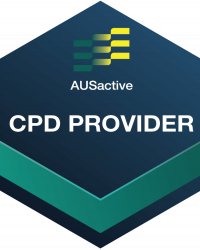Wunda Chair Repertoire
Mobility:
Spinal Mobility: Seated Spine Stretch
Alternate Names
Spine Stretch Forward
Derived From
Mat Pilates: Spine Stretch
Primary Element
Mobility
To help improve the mobility and flexibility of the spine.
Secondary Element
Stability
To develop abdominal stability to keep the pelvis stable throughout the exercise and to create support for the spine during the movement.
Tertiary Element
Strength
To strengthen the abdominals whilst supporting the spine during the movement.
Repetitions
6-10
Apparatus Setup
Suggested springs
- Exo Chair by Balanced Body
- Cactus style number system
- One spring on setting 2
- Cactus style number system
- Resistance: medium
Scan the apparatus once the client is moving for correct set up (Clain Pilates, 2002)
- Pedal position first – check the dowl is secure if split pedal
- Springs second
- Handles or small apparatus such a ball or Magic Circle last
Place foam matting or a pad over the base of the Wunda Chair underneath the pedal to stop the pedal ‘crashing’
Plane of Motion
Sagittal
Targeted Muscles
The spinal flexors such as the rectus abdomins and the deeper layer of transversus abdominis to assist in pelvis stability.
The spinal extensors such as the erector spinae which include the longissimus, iliocostalis, and spinalis muscles.
Warnings
Not suitable for some spine, shoulder, wrist issues, where flexion is contraindicated or where the client is unable to work in a pain free range of motion.
Execution
Sit on the floor or Mat facing the pedal and place the legs either side of the Wunda Chair base in a V-position. Place the heels of the hands on the pedal in line with the shoulders. Aim to start with the pelvis in a neutral position and the shoulders straight.
Exhale and press the pedal down by flexing the spine forward and creating a C curve in the spine. Inhale to engage abdominals and roll the spine back up to the starting position.
Observations
Do a body scan of the client taking note of the following points
- Pelvis
- Can the client keep the pelvis and in neutral still the entire time tucking the pelvis under and leaning back, or tilting the pelvis forward?
- Legs
- Can the client keep the legs still throughout?
- Allow the client to bend their knees, or sit on the end of the Mat rolled up or a yoga block to assist in keeping their pelvis neutral, particularly if they are biasing a posterior tilt or have tight hamstrings.
- Feet
- Are the feet flexed and pressing into the sides of the Wunda Chair?
- Apparatus
- Is there tension on the springs the whole time? Or is the pedal crashing to the base of the Wunda Chair indicating a lack of control and a push by the client beyond their ideal range of motion? If the pedal is crashing at the bottom it is likely the spring setting is too light, or more control is needed.
- Ensure the Wunda Chair is pushed up against a wall or is placed on grip mats or padding so it does not move throughout the exercise
Learning Style Technique Cues
Auditory – word associations that connect mind and body
- Focus on controlling the movement of the pedal down towards the mat at the same pace as it lifts back up towards the stopper
- Say the client’s name when you’re about to interact with them
Visual
- Imagine a C curve in your spine, draw the nevel to the spine whilst pressing down
- Imagine curling up and over a fit ball and avoid sinking the spine
- You may demonstrate a part of the movement as a visual representation for the client to see
Kinaesthetic
- Adjust the leg position by bending the knees or proping up onto the Mat folded over or a yoga block in order to feel the stretch in the lumbar spine not primarily the hamstrings
- Connect to the anchor point of the abdominals drawing in before the spine re-stacks
Modifications and Variations
Regress the exercise by
- Decreasing the spring setting to one spring on setting 1
- Reduce repetitions and/or pace
- Sitting on a yoga block or the Mat rolled up to allow the legs to extend and find more range from the lumbar spine if the hamstrings and lumbar spine are tight
- Reducing the range of motion so the client can focus on pelvis stability, holding their position and flexing the spine
- Working on Mat Pilates: Seated Spine Stretch
Progress the exercise by
- Increasing the spring settings to create more challenge for the arms to press and engage against
- Working towards Wunda Chair Spinal Mobility: Seated Spine Twist
- Working towards Wunda Chair Abdominal Work: Push Up Floor
- Working towards Wunda Chair Abdominal Work: Push up Feet on Bar
Series and Transitions
This exercise is part of the Spinal Mobility series which also includes Seated Spine Twist. These exercises can also be found in the Mat Pilates repertoire, and variations in the Cadillac repertoire.

